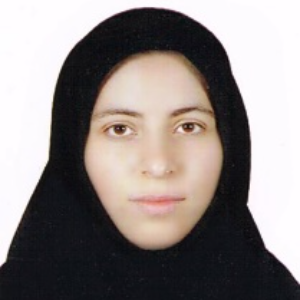Mehtap Adyin, Yeditepe University, Turkey
The cell wall is one of the features that distinguish the structure of plant cells. It contains layers of polysaccharides that affect the development of the cell. (1,3;1,4)-b-Glucan, otherwise known as mixed linkage β-glucan, is a non-cellulosic β-linked polysaccharid [....] » Read More






























Title : Mind the gaps between innovation and impact: Critical research to validate product claims for the future of a productive, nutritious, and globally sustainable food system
Rajnish Khanna, Stanford University, and i-Cultiver, Inc., United States
There exists a gap between basic research led by the academic sector and commercialization of technology led by the industry sector. Biotechnology Industry, particularly plant biotechnology, is skilled in bringing new products to end-users. As a result, there are numerous agricul [....] » Read More
Title : Modern taxonomic assessments should be based on poly-trait diagnostic approach, rather than only on molecular investigations
Hit Kishore Goswami, Barkatullah University, India
Since the time of Carolus Linnaeus, the concepts of identification of a species appear to have changed drastically on account of enormous progress in modern DNA based technological advancements. Most modern research workers are mainly dependent on comparative phylogenetics, chief [....] » Read More
Title : Metabolite and transcriptome profiling reveals drought adaptive strategies in the orphan African cereal, tef (eragrostis tef)
Bahareh Sadat Haddadi, Aberystwyth University, United Kingdom
Background: Tef (Eragrostis tef), is a nutritious, gluten-free cereal rich in protein, fibre, vitamins, and minerals. It represents a good alternative cereal for individuals with gluten intolerance, such as those with celiac disease. Despite originating in Ethiopia, tef yields ar [....] » Read More
Title : Enhancing crop tolerance in sodic soils: Insights from wheat genotype responses
Monia Anzooman, The University of Queensland, Australia
Soil sodicity stands as a significant impediment to seedling emergence and crop production, potentially hindering plant growth due to both physical and chemical constraints. Investigating responses to ion imbalances could aid in identifying genotypes resilient to the chemical cha [....] » Read More
Title : plants biotic and abiotic stress in terms of climate change
Kakha Nadiradze, Association for Farmers Rights Defense, Georgia
Will be Updated Soon...
Title : Shoot and root omics signature in phytostabilization and hyperaccumulation model plants
Dalila Trupiano, University of Molise, Italy
The growing concern over soil contamination has led to increased interest in phytoremediation, a sustainable and cost-effective approach. Among other techniques, phytostabilization and hyperaccumulation have gained a lot of attention for their efficiency. Hyperaccumulation refe [....] » Read More
Title : Metabolomic characterization of autochthonous legume ecotypes
Alessandra Renella, University of Molise, Italy
Autochthonous ecotypes or local varieties are plant genetic resources characterized by high genetic variability, specific adaptation to environmental stress conditions, and the presence of specialized metabolites (terpenoids, flavonoids, alkaloids) with human health-promoting e [....] » Read More
Title : Effect of exogenous treatment with nitric oxide (NO) on redox homeostasis in barley seedlings (Hordeum vulgare L.) under copper stress
Marouane Ben Massoud, University College Cork, Ireland
The present research investigates the protective mechanism of nitric oxide (NO) in regulating tolerance to Cu-induced toxicity in shoots of barley (Hordeum vulgare L.). After 10 days, treatment with 200 µM CuCl2 caused a significant reduction in growth and photosynthetic ef [....] » Read More
Title : Standardization of a microsatellite PCR protocol for enterolobium cyclocarpum populations in Costa Rica.
Dawa Mendez Alvarez, National University, Costa Rica
The Guanacaste tree or Enterolobium cyclocarpum is native to tropical and subtropical America, is a species used in the reforestation and restoration of degraded areas and is considered the national tree of Costa Rica. Because of its economic and cultural importance, it is necess [....] » Read More
Title : Grey water as a potential, energy efficient solution for diverse water requirements of the UAE: Insights from research involving grey water for irrigating selected fodder crops of the UAE.
Yasmin Shameem, UAE University, United Arab Emirates
The growing demands of UAE's water needs are directly affecting the energy requirements of the region as well. It is high time to explore methods and measures that result in the provision of energy smart water sources. The potential of grey water as a reutilised source of w [....] » Read More
Title : Implication of the population epigenomic diversity on the adaptation of a plant clonal species
Le Veve Audrey, Charles University, Czech Republic
Climate change poses a significant threat to plant species, potentially pushing them beyond their adaptive capacities. Epigenetic modifications, such as DNA methylation, have emerged as a key mechanism enabling plants to quickly adapt to environmental changes by generating locall [....] » Read More
Title : Studies on the use of locally available (coxs bazar and saint martin) renewable seaweed wastes as compost organic fertilizer resources
Durlave Roy, Bangladesh Open University, Bangladesh
Marine red algae from the Bangladesh Bay of Bengal Hypnea Sp have been used as organic materials due to the presence of a number of plant growth-stimulating compounds. The effect of various seaweed species on plant growth and development with an emphasis on the use of this renewa [....] » Read More
Title : Implementation of artificial inoculation test to screen Ghana sumatra oil palm progenies for their level of resistance/ tolerance to basal stem rot (BSR) disease
Emmanuellah Lekete Lawson, Council for Scientific and Idustrial Research (CSIR), Ghana
Genetic resistance to Basal Stem Rot (BSR) of oil palm is a major component of an integrated control strategy for BSR disease. Thus, early detection of the level of resistance or susceptibility is of paramount importance for the breeding and sustainability of this crop particul [....] » Read More
Title : Geospatial modeling of forest cover dynamics and impact on climate variability in awi zone, Ethiopia
Samson Tsegaye Mekasha, Addis Ababa University, Ethiopia
Globally, forest habitats are threatened by human-induced deforestation and degradation. This study was aimed to assessing changes in land-use patterns in Awi Zone, Ethiopia, during the last 34 years and its relationship with land surface temperature (LST) and rainfall using [....] » Read More
Title : Conservation agriculture for sustainable production in the maize-wheat system--towards future commitment to the global food basket
Amal Ghosh, Indian Agricultural Research Institute, India
Over exploitation of conventional farming in wheat- maize system emerged as the prime cause of concern for soil sickness. Concurrently, alarming practice of indiscriminate stubble burning deteriorates soil health, substantially. Better understanding these cognitive issues insiste [....] » Read More
Title : Marine angiosperms as potential sources for symbiotic bacteria and phytochemical leads for controlling common storage pests and mosquito larvae with special reference to tropical sea grasses halodule pinifolia and syringodium isoetifolium
A P Lipton, Malankara Catholic College, India
Sea grasses are marine angiosperms specially adopted to establish and grow in coastal ecosystems. The structural components of leaves, rhizomes and roots trap and store both sediments and nutrient inputs leading to high biodiversity and productivity in sea grass meadows. Their [....] » Read More
Title : Improving the use of land resources in Tajikistan by optimizing the choice of crops using the example of jerusalem artichoke (Helianthus Tuberosus L.)
Kurbonali, Plant Physiology and Genetics of National Academy of Sciences of Tajikistan, Tajikistan
The Republic of Tajikistan is a mountainous country, 93% of whose territory is occupied by mountain ecosystems. The vertical zonation where it is possible to grow crops extends at altitudes from 350 to 4000 m above sea level. Tajikistan is rich in such important natural resourc [....] » Read More
Title : Investigation of the aromatic amino acids branch pathway in the marine diatom Phaeodactylum tricornutum.
Amir Danesh, University of Quebec in Trois-Rivieres, Canada
Aromatic amino acids (AAAs), including phenylalanine (Phe), tyrosine (Tyr), and tryptophan (Trp), are essential building blocks for proteins and participate in various physiological processes in all living organisms. The biosynthesis of AAA in plants serves a multifaceted purpose [....] » Read More
Title : A transcriptome meta-analysis to depict functionalities and biomarkers of the root under pathogen infection
Gabriella Sferra, University of Molise, Italy
Pathogens affect plant health and stability. However, there is a lack of methodologies to understand the infection progression and its possible outcome, especially in urban environments where plants are needed to provide beneficial ecosystem services and can threaten the environm [....] » Read More
Title : Iron oxide nanoparticles confer cross-tolerance to arsenate-induced stress in rice roots by engaging nitric oxide
Padmaja Rai, Motilal Nehru National Institute of Technology, India
Plants exhibit sensitivity and can face significant risks from a range of stressors and environmental pollutants. The term "cross tolerance" is employed because exposure to one stressor enhances the plant's ability to withstand a different stressor. Understanding cr [....] » Read More
Title : Isolation and identification of mycorrhizal fungi associated with roots and soils of different plant hosts in Syria
Shoula Aboud Kharouf, National Commission For Biotechnology, Syrian Arab Republic
Thirty six samples of plant roots with the surrounding soil were collected during the period 2022-2023, which included 5 sites in Al-Hasakeh Governorate, 3 sites in Deir Ezzor Governorate, 2 sites in Al-Raqqa Governorate, 3 sites in Lattakia Governorate, 2 sites in Tartous Govern [....] » Read More
Title : Transcriptome analyses of orange carrot lines in response to drought stress
Usman Khalid Chaudhry, Pakistan Environmental Protection Agency, Pakistan
Drought stress (DS) is a major threat to carrot production in the era of climate change. Additionally, limited studies are available on carrot responses to DS at the transcriptomics level. Keeping in view, the current study was conducted where two contrasting orange carrot lines [....] » Read More
Title : Assessment report of physico-chemical and bacteriological quality of two water sources in the souarekh region of El Kala North-East, Algeria and Its suitability for irrigation
Bergal Amira, University Chadli Bendjedid El Tarf, Algeria
The good quality of source water for the consumption by humans and other living organisms is an important element for public health. This study was conducted at _ during _ to evaluate two water sources in the region of Souarekh in the wilaya of El Tarf (Ain Siglèb and Ain [....] » Read More
Title : Diversity, conservation, and utilization of grain legumes: A potential source for food and nutritional security in Nepal
Rajendra Darai, National Maize Research Program, Nepal
Grain legumes are precious crops of Nepal in terms of the dietary protein supplement ample concentration of micronutrients, role in crop intensification and ameliorating soil fertility. About 11 percent of the cultivated area is occupied by grain legumes that include lentil, chic [....] » Read More
Title : Morphological characteristics, biomass, fiber and seed yield of an industrial hemp cultivar and its progenies under different fertilization rates
Mahnaz Abdollahi , Agricultural Research, Education and Extension Organization, Iran (Islamic Republic of)
Hemp (Cannabis sativa L.) has received renewed interest for a panoply of medical benefits, as well as in the production of biofuels and fiber. This study aimed to determine the response of an industrial hemp cultivar (Fedora 17) and its progenies (Fed17-2) to different fertilizat [....] » Read More